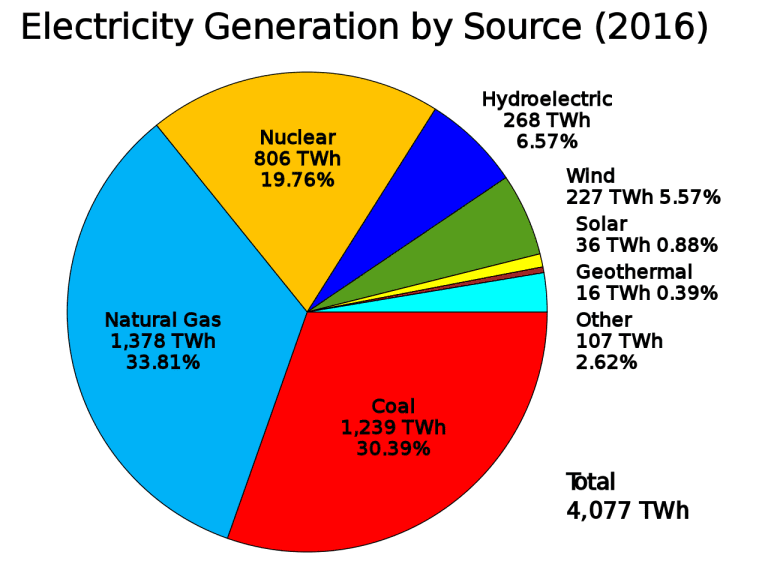For a long time, I’ve believed in man-made global warming and thus been interested in the need for the world to convert from burning fossil fuels to using renewable energy, such as especially solar panels and wind turbines. It is a slow process to make this transition, but it was speeded up the past few days when nations met from the world over in Scotland at COP26. This acronym refers to the United Nations’ 26th Climate Change conference, which just adjourned last Saturday.
U.S. President Joe Biden had campaigned for the presidency on a platform that strongly advocated the U.S. need to transition from fossil fuels to renewables in opposition to the previous Trump administration, which had largely denied man-made global warming. And Biden attended COP26 in the midst of Congress signing his Build Back Better legislation package amounting to over $1 trillion that includes much assistance for developing renewables.
Thousands of scientists all over the world have proved for decades and from their measurements and experiments that since the inauguration of the Industrial Revolution, thus starting in the late 19th century, the planet’s atmosphere has risen in temperature almost two degrees Fahrenheit, and all of this, or a huge majority of it, has been caused by humans burning fossil fuels mostly to heat and air condition their buildings and drive their vehicles for transportation.
The problem is that this heating of the planet hardly dissipates at all by going into outer space; rather, it stays right here, decade after decade, so that temperatures continue to escalate. Scientists know that this heating of the planet raises the temperature of the oceans and melts ice in the polar regions, all of which raises sea levels the world over because warm water has more volume than cold water does.
Furthermore, it is the wealthiest nations, such as the U.S. and Europe, that have been doing most of this global warming since the Industrial Revolution. And it is small island countries with low-income populations throughout the oceans that are suffering the most from this rising of sea levels. Some of these places in the future will be flooded by the oceans and therefore be no longer livable. Therefore, an important issue that was broached at COP26 was that these countries that are and will suffer the most from global warming were demanding reparations from the wealthiest nations. That is, they called for the biggest polluters, such as the China, the U.S., and Europe to contribute money to assist them in fighting this predicament and demanding that these wealthy nations accelerate their programs of transitioning from from fossil fuels to renewables. This demand, I think, is something that will greatly intensify in the near future.
Christians should be at the forefront in supporting this effort to reduce man-made global warming. How so? Christians believe in the Bible, or at least they are supposed to. The Bible begins by saying, “In the beginning God created the heavens and the earth” (Genesis 1.1 NIV). And he made human beings and made them custodians of the earth. Therefore, humans have a God-given responsibility to care for this planet rather than to pollute it. Plus, the Bible says, “you shall love your neighbor as yourself” (Leviticus 19.18), which Jesus also taught ” (Matthew 5.44; Mark 12.31).
Finally, Isaiah the prophet declares concerning the end times, “The earth lies polluted under its inhabitants; for they have transgressed laws, violated the statutes, broken the everlasting covenant” (Isaiah 24.5 NRSV). The everlasting covenant is that which God made with Noah, when he placed the rainbow in the sky (Genesis 9.8-17). What will happen to these violators, these polluters? The angels will sing at The Judgment at the end of the age, “We give you thanks, Lord Almighty, . . . for rewarding your servants, the prophets and saints and all who fear your name, both small and great, and for destroying those who destroy the earth” (Revelation 11.18 NRSV).
The cost of producing electricity from renewables is declining considerably due mostly to increased technology and scaling production. Here’s where the U.S. stands now in its transitioning from fossil fuels to renewables. The following are the present costs per megawatt-hour of electricity and the percentage of fuels of the U.S.’s total electrical energy (some figures from U.S. Energy Information Administration):
Fossil Fuels: 61%
Natural Gas $41-74, 40%
Coal $60-143, 20%
Petroleum ?, .4%
Nuclear: $74, 20%
Renewables: 20%
Geothermal $69, .4%
Hydropower , 7%
Wind Turbines $48, 8%
Solar Panels $45, 3%
(Above 2-16 chart indicates improvement of renewables.)














